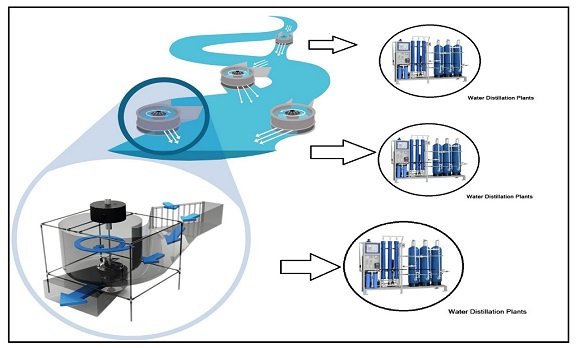Wastewater treatment plays a crucial role in maintaining the health and well-being of our communities and the environment. With the ever-increasing population and urbanization, the volume of wastewater generated is also on the rise.
Traditional wastewater treatment methods are often inadequate in effectively removing pollutants and ensuring the quality of treated water. However, with advancements in technology and the growing focus on sustainability, innovative industrial wastewater treatment solutions are emerging to address these challenges. In this article, we will explore some of these innovative solutions and their potential to create a sustainable future.
1. Membrane Bioreactors (MBR)
Membrane Bioreactors (MBRs) are a promising technology that combines biological treatment with membrane filtration. The process involves the use of microorganisms to break down organic matter in the wastewater, and the membrane acts as a physical barrier to separate treated water from the biomass.
MBRs offer several advantages over traditional treatment methods, including higher treatment efficiency, smaller footprint, and improved effluent quality. The membrane filtration also helps in the removal of suspended solids and pathogens, making the treated water suitable for reuse in various applications like irrigation and industrial processes.
2. Constructed Wetlands
Constructed wetlands are engineered systems that mimic the natural processes of wetlands to treat wastewater. They are designed to promote the growth of wetland plants, which help in the removal of pollutants through various mechanisms such as filtration, adsorption, and microbial degradation. These wetlands can be used for both municipal and industrial wastewater treatment.
Constructed wetlands not only provide effective treatment but also offer additional benefits such as habitat creation, groundwater recharge, and aesthetic enhancement. They are particularly suitable for decentralized wastewater treatment in rural areas or small communities where conventional treatment plants may not be feasible.
3. Advanced Oxidation Processes (AOPs)
Advanced Oxidation Processes (AOPs) involve the generation of highly reactive hydroxyl radicals to oxidize and degrade organic and inorganic pollutants in wastewater. These processes are particularly effective in treating recalcitrant and toxic compounds that are not easily biodegradable.
AOPs can be used as a standalone treatment or in combination with other processes to enhance the overall treatment efficiency. Some commonly used AOPs include ozonation, UV/H2O2, and Fenton’s reagent. Apart from pollutant removal, AOPs also offer the advantage of disinfection, as the hydroxyl radicals can effectively inactivate pathogens present in the wastewater.
4. Resource Recovery
Traditionally, wastewater has been considered a waste product to be disposed of. However, innovative treatment solutions are now focusing on recovering valuable resources from wastewater. One such example is the extraction of nutrients like nitrogen and phosphorus from wastewater for use as fertilizers in agriculture.
These nutrients, which are otherwise a cause of concern in water bodies due to their role in eutrophication, can be effectively removed and converted into a valuable resource through processes like struvite precipitation. Similarly, energy recovery from wastewater is gaining attention through technologies like anaerobic digestion and microbial fuel cells, which convert organic matter into biogas or electricity.
5. Decentralized Treatment Systems
Decentralized wastewater treatment systems are becoming increasingly popular as they offer a flexible and sustainable alternative to centralized treatment plants. These systems are designed to treat wastewater at or near the source of generation, eliminating the need for long-distance conveyance and reducing the burden on existing infrastructure.
Decentralized treatment systems can range from simple septic tanks to more advanced technologies like aerobic treatment units and membrane bioreactors. They are particularly useful in areas with scattered or remote populations, where extending sewer lines may not be economically feasible. Decentralized systems also provide opportunities for onsite reuse of treated water, reducing the demand for freshwater resources.
Conclusion
The future of wastewater treatment lies in innovation and sustainability. With the increasing demands on water resources and the need to protect the environment, it is essential to adopt innovative solutions that not only effectively treat wastewater but also recover valuable resources and minimize the ecological footprint.
Membrane bioreactors, constructed wetlands, advanced oxidation processes, resource recovery, and decentralized treatment systems are just a few examples of the innovative approaches that are shaping the future of wastewater treatment. By investing in these solutions and promoting their widespread adoption, we can create a sustainable future where wastewater is no longer seen as a burden, but as a valuable resource for our communities and the environment.
